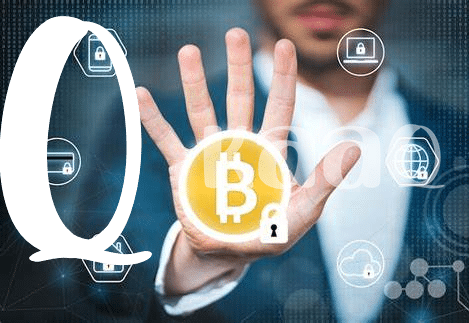🗝️ the Dawn of Bitcoin and Security Concerns

Back in 2009, when Bitcoin first appeared, it was like a new frontier. Exciting, yet filled with uncertainties, especially about keeping it safe. Imagine a digital treasure that anyone around the world could own, but just like pirate gold, it needed protecting from thieves and hackers. Initially, security was pretty basic – kind of like having a diary with a tiny lock. But soon, everyone realized that this wasn’t enough. People began to notice that if someone really wanted to, they could break in and steal their digital coins. This sparked a lot of conversations and a bit of worry. After all, what good is treasure if you can’t keep it safe? So, the community started to think hard about how to make this new form of money secure, laying down the very first steps toward building a digital fortress around Bitcoin.
| Year | Security Milestone |
|---|---|
| 2009 | Launch of Bitcoin – Basic security protocols in place |
| 2010 | First major realization of security threats |
🔒 the First Steps in Strengthening Bitcoin’s Armor
In the early days, Bitcoin was like a wild west town with lots of opportunities but not much in the way of law and order. The digital gold rush attracted both pioneers and bandits. As more people jumped on the Bitcoin bandwagon, it became clear that without a stronger safe, our digital treasures were at risk. So, developers rolled up their sleeves and set to work, like blacksmiths forging a new kind of armor. They introduced tougher measures to protect our Bitcoin wallets from hackers – kind of like inventing better locks for our digital doors.
As they tinkered and toiled, the community started to see some real changes. They created complex puzzles that a computer needs to solve to verify a Bitcoin transaction, making it harder for the bad guys to tamper with. To learn more about how these security concerns have evolved, especially with the increase in Bitcoin transactions, check out this insightful piece on https://wikicrypto.news/navigating-security-concerns-in-rising-bitcoin-transactions. It’s a journey that has taken Bitcoin from the digital equivalent of a flimsy wooden chest to a fortified vault, ensuring the safety of transactions amidst the growing popularity of this revolutionary currency.
⚙️ Innovations and Upgrades in Bitcoin Protocols

As Bitcoin began to grow, so did the need for making it more secure and trustworthy. Think of it like evolving from a simple door lock to a high-security smart lock system on your home. Developers worked tirelessly, introducing new features and updates to the Bitcoin network. This wasn’t just about fixing bugs; it was about building a fortress. They wanted to make sure that everyone’s digital gold was safe and sound, improving the way transactions were verified and ensuring that hacking Bitcoin would be no easy feat.
With each upgrade, Bitcoin became not just stronger, but smarter. 🛠️ Imagine having a constantly evolving security system that adapts to new threats. That’s what was happening. Features like SegWit (which stands for Segregated Witness) came into play, making Bitcoin transactions quicker and more efficient. It was like upgrading the roads so that the armored trucks carrying gold could travel faster and safer. Through these constant improvements, Bitcoin wasn’t just surviving; it was thriving, setting a gold standard in digital currency security. 🛡️💡
🕵️♂️ the Rise of Professional Bitcoin Security Teams

As the digital landscape expanded, so did the importance of safeguarding the world’s leading cryptocurrency. It wasn’t long before a new breed of heroes emerged – skilled enthusiasts and professionals dedicated to fortifying Bitcoin against potential threats. These teams, comprising cryptographic wizards and cybersecurity experts, became the unsung guardians of the blockchain universe. Their mission? To anticipate and thwart attacks from those looking to exploit vulnerabilities for personal gain. With their deep understanding of both the technology and the tactics of potential adversaries, these security mavens introduced sophisticated defense mechanisms that were previously unheard of in the cryptocurrency world. Their efforts went beyond simple protective measures, incorporating comprehensive strategies that ensured the integrity and trustworthiness of transactions. In the midst of their ongoing battle against digital rogues, the conversation around bitcoin and renewable energy security concerns also gained prominence, leading to an increased focus not just on securing Bitcoin, but doing so in a way that was mindful of its environmental impact. These advancements marked a significant milestone in Bitcoin’s journey, proving that with the right expertise, the safety of this digital treasure could indeed be preserved for generations to come.
🌍 Global Regulations Shape Bitcoin’s Security Landscape
As Bitcoin began to gain popularity around the world, governments and financial authorities took notice. Initially, there was a lot of confusion about how to deal with this new, digital form of money. Over time, though, countries started developing rules to make sure Bitcoin was used in a safe and legal way. These rules, or regulations, aimed to protect people from fraud and make sure Bitcoin wasn’t used for illegal activities. For example, exchanges where you can buy and sell Bitcoin had to start checking the identity of their users, a process known as KYC (Know Your Customer). This was a big change because part of Bitcoin’s appeal was its anonymity. Additionally, these regulations helped to make Bitcoin more stable and trusted, which encouraged more people and businesses to start using it. While some people were worried that too many rules could limit the freedom that Bitcoin offered, it became clear that a balance between security and freedom was necessary for Bitcoin to grow and be accepted more widely.
| Year | Regulation Milestone | Impact on Bitcoin |
|---|---|---|
| 2013 | First major Bitcoin regulation guidelines released | Increased user trust and security |
| 2015 | Introduction of KYC/AML procedures for exchanges | Improved legal compliance and reduced misuse |
| 2018 | Implementation of stricter global regulations | Enhanced stability and broader adoption |
| 2021 | Expansion of tax reporting requirements for crypto transactions | Boosted government oversight and transparency |
🚀 Embracing Cutting-edge Technologies for Bitcoin Safety

As we leap forward into the future of digital money, it’s like we’re stepping into a sci-fi movie. The tools and tricks to keep Bitcoin safe are getting more sophisticated. Imagine, for instance, brilliant minds working on quantum-proof cryptography to outsmart super-smart computers of the future. It’s not just stuff for spy movies anymore; it’s real, and it’s all about making sure our digital gold stays in the right hands. The blend of AI for detecting sneaky moves by hackers before they strike and biometric security, ensuring only you can access your digital wallet, is taking safety to the next level. It’s turning the once wild west of the internet into a secure vault, accessible only with your digital key.
As we unfold this new era, it’s essential to stay informed about how these advances also stir the pot of regulatory discussions worldwide. It’s a dance between keeping our digital treasures safe and navigating the ever-watchful eyes of global regulators. Meanwhile, concerns about how quickly these digital currencies are being embraced raise flags about bitcoin and central banks security concerns. This tango of tech and policy ensures that as we step into tomorrow, our digital valuables are not only safer but also fit snugly within the evolving fabric of global finance. Keeping an eye on these developments is more than just being tech-savvy; it’s about being prepared for the future of money.
